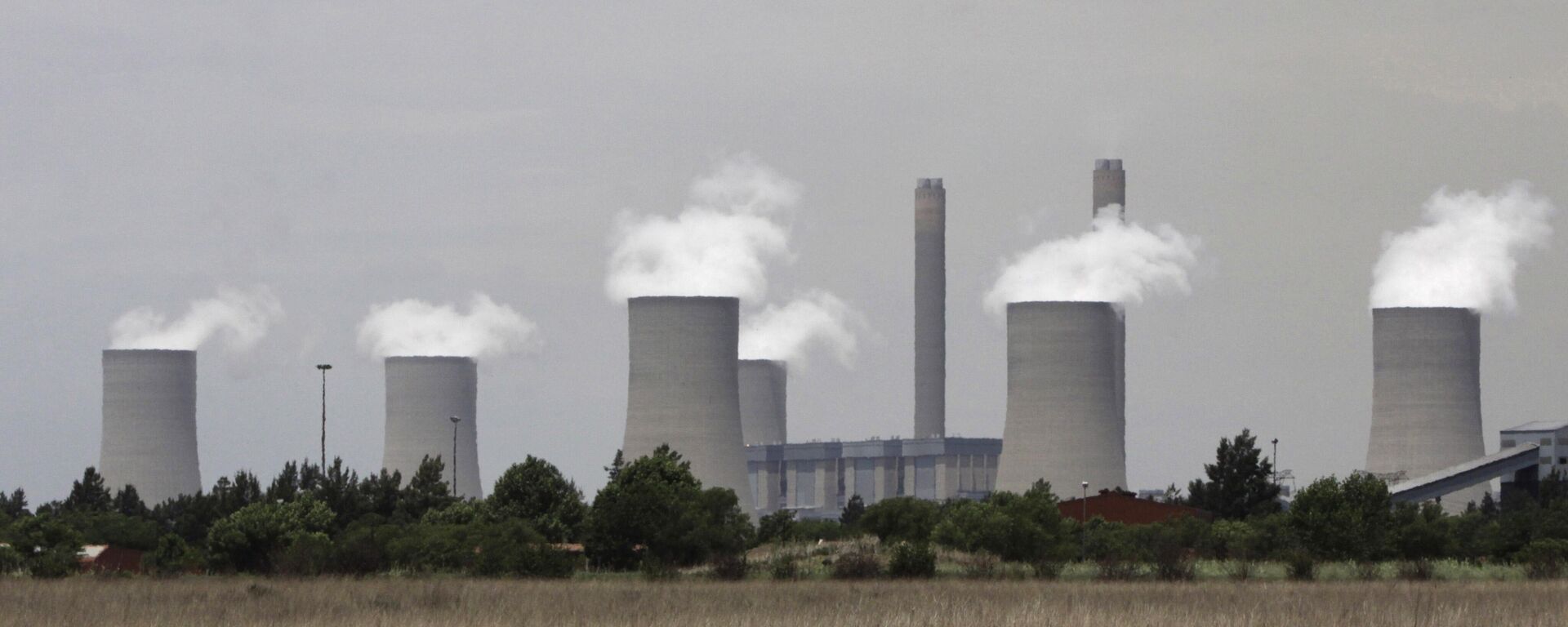https://en.sputniknews.africa/20230423/south-africa-electricity-minister-load-shedding-impossible-to-end-before-2024-1058797173.html
South Africa Electricity Minister: Load Shedding Impossible to End Before 2024
South Africa Electricity Minister: Load Shedding Impossible to End Before 2024
Sputnik Africa
Africa’s most-industrialized nation has been subjected to rolling blackouts every day this year as Eskom, the state company that supplies about 90% of the nation’s electricity, fails to meet demand from its dilapidated plants.
2023-04-23T13:32+0200
2023-04-23T13:32+0200
2023-04-23T13:49+0200
sub-saharan africa
south africa
electricity
energy crisis
african national congress (anc)
southern africa
eskom
https://cdn1.img.sputniknews.africa/img/07e7/04/17/1058797159_0:114:3233:1933_1920x0_80_0_0_ca246c8786f57aae03b812e4d5586f38.jpg
South Africa's Electricity Minister Kgosientso Ramokgopa has said that it is not possible to end load shedding by the end of 2023.The statement came during the African National Congress' (ANC) national executive committee meeting in Boksburg on Saturday, during which Ramokgopa also shared a plan to combat the rolling power cuts.Similar outlooks were voiced by the former Escom CEO Andre de Ruyter in his interview to local media this February. De Ruyter said that the state of the country's electricity grid was still unstable.To curb the situation, in Ramokgopa's words, several interventions are underway, including adding 4,000 megawatts of power to the grid over the next six months.On April 12, Ramakgopa urged South Africans to prepare for a difficult winter plagued by higher stages of load shedding, saying that the unpredictability of the country’s fragile grid, coupled with high demand, was undermining Eskom's ability to provide a consistent supply of energy.Recently, South Africa's Finance Minister Enoch Godongwana said that the government would not provide additional funding for debt-laden power utility Eskom, underscoring the government’s disjointed approach to resolving the nation’s debilitating energy crisis.Earlier, South Africa’s government revoked a national "state of disaster" declared in February to manage a crippling electricity crisis. The state of disaster gave the government additional powers to respond to the crisis, including by permitting emergency procurement procedures with fewer bureaucratic delays and less oversight.
https://en.sputniknews.africa/20230415/south-africas-finance-minister-rules-out-future-bailouts-of-eskom-amid-energy-crisis-1058617539.html
south africa
southern africa
Sputnik Africa
feedback@sputniknews.com
+74956456601
MIA „Rossiya Segodnya“
2023
Maxim Grishenkin
https://cdn1.img.sputniknews.africa/img/07e7/0a/17/1063018107_0:0:1104:1103_100x100_80_0_0_03090c85a11f5d2e8a19cf1d989443c9.jpg
Maxim Grishenkin
https://cdn1.img.sputniknews.africa/img/07e7/0a/17/1063018107_0:0:1104:1103_100x100_80_0_0_03090c85a11f5d2e8a19cf1d989443c9.jpg
News
en_EN
Sputnik Africa
feedback@sputniknews.com
+74956456601
MIA „Rossiya Segodnya“
Sputnik Africa
feedback@sputniknews.com
+74956456601
MIA „Rossiya Segodnya“
Maxim Grishenkin
https://cdn1.img.sputniknews.africa/img/07e7/0a/17/1063018107_0:0:1104:1103_100x100_80_0_0_03090c85a11f5d2e8a19cf1d989443c9.jpg
south africa blackout, south africa load shedding, south africa energy crisis
south africa blackout, south africa load shedding, south africa energy crisis
South Africa Electricity Minister: Load Shedding Impossible to End Before 2024
13:32 23.04.2023 (Updated: 13:49 23.04.2023) Africa’s most-industrialized nation has been subjected to rolling blackouts - known as load-shedding - almost daily this year as Eskom, the state company that supplies about 90% of the nation’s electricity, fails to meet demand from its dilapidated plants.
South Africa's Electricity Minister Kgosientso Ramokgopa has said that it is not possible to end load shedding by the end of 2023.
The statement came during the African National Congress' (ANC) national executive committee meeting in Boksburg on Saturday, during which Ramokgopa also shared a plan to combat the rolling power cuts.
"So the long and short of it is that, no, load shedding will still be with us even by the end of this calendar year, but we will do everything possible to ensure that its intensity is not as severe, so that we get the South African economy going," the electricity minister said.
Similar outlooks
were voiced by the former Escom CEO Andre de Ruyter in his interview to local media this February. De Ruyter said that the state of the country's electricity grid was still unstable.
"It was possible to fix some of the problems at the different power stations, but that would not end blackouts anytime soon," de Ruyter said. "Now these issues should be resolved by the end of calendar 2023 and if that's the case, and it certainly looks like it is doable, then the outlook from 2024 onwards is going to be better. Will load shedding then be definitively a thing of the past? I think not."
To curb the situation, in Ramokgopa's words, several interventions are underway, including adding 4,000 megawatts of power to the grid over the next six months.
"4,500 megawatts relieves us of that pressure, five interventions and then six to 18 months conservatively 12,500 megawatts... there's a multiplicity of interventions, about eight of them that are possible," the official pointed out.
On April 12, Ramakgopa urged South Africans to prepare for a difficult winter plagued by higher stages of load shedding, saying that the unpredictability of the country’s fragile grid, coupled with high demand, was undermining Eskom's ability to provide a consistent supply of energy.
Recently, South Africa's Finance Minister Enoch Godongwana said that the government would not provide additional funding for debt-laden
power utility Eskom, underscoring the government’s disjointed approach to resolving the nation’s debilitating energy crisis.
Earlier, South Africa’s government revoked a national "state of disaster" declared in February to manage a crippling electricity crisis. The state of disaster gave the government additional powers to respond to the crisis, including by permitting emergency procurement procedures with fewer bureaucratic delays and less oversight.



